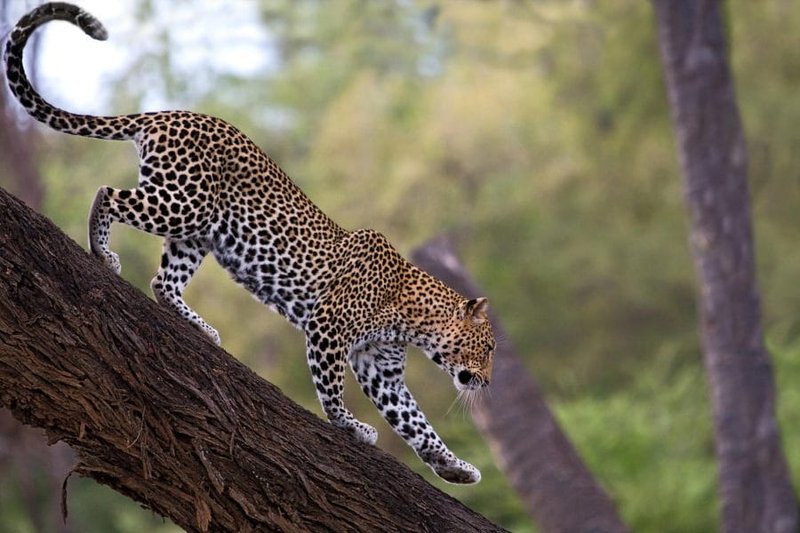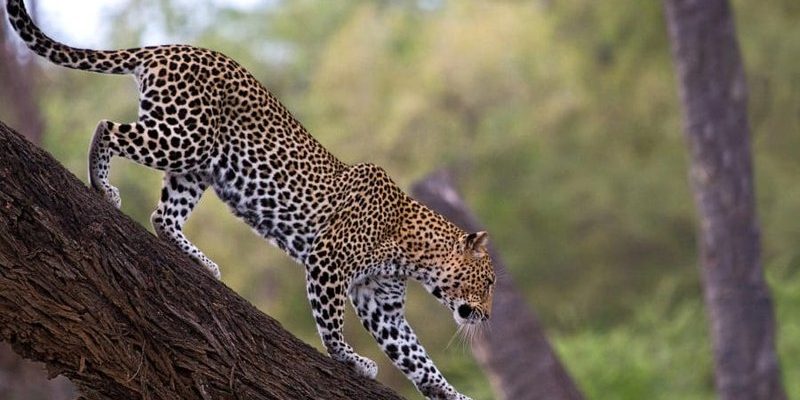
In this article, we’ll take a leisurely stroll through the various environments that these magnificent creatures call home. From savannas to rainforests, we’ll explore how the African leopard thrives in different settings and what makes each habitat special. So, grab a cup of coffee, and let’s dive into the leopard’s world!
The Range of African Leopards
African leopards are mainly found across sub-Saharan Africa, but their range is surprisingly vast. These cats can be spotted in countries like South Africa, Kenya, Tanzania, and parts of West Africa. Here’s the thing: leopards are quite the travelers. They can adapt to many environments, which is one of the reasons their distribution is so widespread.
In fact, African leopards can be found in a variety of ecosystems. Whether it’s open savanna, rugged mountains, or thick forests, each region offers unique challenges and opportunities for survival. Their adaptability is impressive. These big cats often blend seamlessly into their surroundings, giving them an edge as hunters.
Key Countries and Regions
Let’s break it down a bit. Here are some key places where you can find African leopards:
- South Africa: The Kruger National Park is a hotspot for leopards, providing them with ample prey and cover.
- Tanzania: The Serengeti is not just famous for its wildebeest migrations; it’s also a prime leopard habitat.
- Kenya: Areas like the Maasai Mara are renowned for their leopard populations.
- Namibia: Although a bit more arid, leopards thrive in the country’s canyons and scrublands.
- West Africa: Regions like Senegal host leopards, though their numbers are less than in East or Southern Africa.
Many people don’t realize that the distribution of leopards is not uniform. Habitat loss, poaching, and human-wildlife conflict can significantly impact their populations in certain areas.
Savannas: The Iconic Leopard Habitat
When you picture leopards, you might immediately think of wide-open savannas. These grasslands, dotted with acacia trees, are one of the most iconic habitats for African leopards. Here, they have plenty of room to roam and hunt. The tall grasses provide excellent cover, helping them stay invisible as they stalk their prey.
In savanna ecosystems, leopards mostly hunt medium-sized animals, such as impalas or wildebeests. They rely on their excellent camouflage and stealth to pounce at just the right moment. The beauty of these habitats is that they’re rich in biodiversity, meaning leopards are not the only predators around. They share their space with lions, hyenas, and other wildlife, creating a dynamic ecosystem.
Adaptations for Savanna Life
Living in the savanna requires some unique adaptations. For instance:
- Cloaking Skills: Their spotted coats are perfectly designed to blend into the grasslands.
- Nocturnal Nature: Many leopards are active at night, avoiding competition with other predators like lions.
- Climbing Ability: Savanna leopards often cache their prey in trees to keep it safe from scavengers. This skill is a game changer.
These adaptations help leopards thrive in their environment, proving that survival is often about using what you have to your advantage.
Forests and Woodlands: A Hidden World
You might not picture leopards lurking in dense forests or woodlands, but these habitats are vital for their survival too. In countries like the Democratic Republic of the Congo, leopards navigate through thick vegetation and towering trees. These forests offer different prey and cover, making it an ideal spot for leopards that prefer a more secluded lifestyle.
In forested areas, leopards adapt their hunting strategies. They tend to target smaller mammals like monkeys and rodents, as well as birds. The lush environment allows them to be incredibly stealthy. Imagine a leopard softly padding through a sun-dappled rainforest, the sounds of rustling leaves masking its approach.
The Role of Forests in Leopard Survival
The forests serve multiple purposes in a leopard’s life:
- Cover: The dense foliage provides excellent camouflage.
- Varied Diet: More prey options, including monkeys and birds, help leopards thrive.
- Water Sources: Forests often have rivers and streams that support a rich ecosystem, attracting prey.
Sadly, deforestation poses a significant threat to leopards in these areas. With fewer trees, their habitat shrinks, making their survival more challenging.
Mountains and Rocky Outcrops
Leopards are also skilled climbers, and that includes a knack for living in rugged, mountainous regions. In places like the Ethiopian highlands, leopards have adapted to seeking refuge in rocky outcrops. These areas offer not just a great landscape for hunting but also safety from larger predators and humans.
The mountains present unique challenges, such as a different prey base. Leopards in these regions may hunt smaller mammals like mountain gazelles. The rocky terrain provides excellent vantage points for spotting potential prey.
Surviving in the Mountains
Living in mountainous habitats requires a few specific adaptations:
- Agility: Leopards must be skilled climbers to navigate the rocks and ledges.
- Territoriality: These cats often patrol larger areas due to the scattered food sources, marking their territory to ward off competition.
- Nutrition Challenges: Availability of prey can vary, making it essential for leopards to adapt their hunting strategies.
Mountains are a unique and challenging home, but leopards have proved time and again that they can thrive in even the toughest conditions.
Human Impact on Leopard Habitats
Sadly, African leopards face numerous challenges in today’s world. Habitat loss due to agriculture, urbanization, and logging affects their populations. With people expanding into their territories, conflicts can arise, leading to a decline in leopard numbers.
In areas where they once roamed freely, leopards now often find themselves cornered. Conservation efforts are crucial to help ensure their survival. Setting aside protected areas, educating local communities, and promoting eco-tourism can all play significant roles in safeguarding these beautiful animals and their habitats.
What Can Be Done?
You might be wondering how you can help. Here are a few suggestions:
- Support Conservation Initiatives: Many organizations work tirelessly to protect leopards and their habitats.
- Spread Awareness: Sharing information about leopards can help educate others on their importance in the ecosystem.
- Eco-Tourism: Visiting protected areas responsibly supports local economies and conservation efforts.
By taking small steps, everyone can contribute to the preservation of leopards and their incredible habitats.
African leopards are remarkable animals, gracefully navigating various landscapes—from the iconic savannas to lush forests and rugged mountains. Their adaptability is a testament to their resilience, but they face many challenges in an ever-changing world.
By understanding where African leopards live and how we can help protect their habitats, we contribute to their survival. Let’s celebrate these beautiful creatures and the diverse environments they inhabit, ensuring that future generations can marvel at their beauty and grace.

